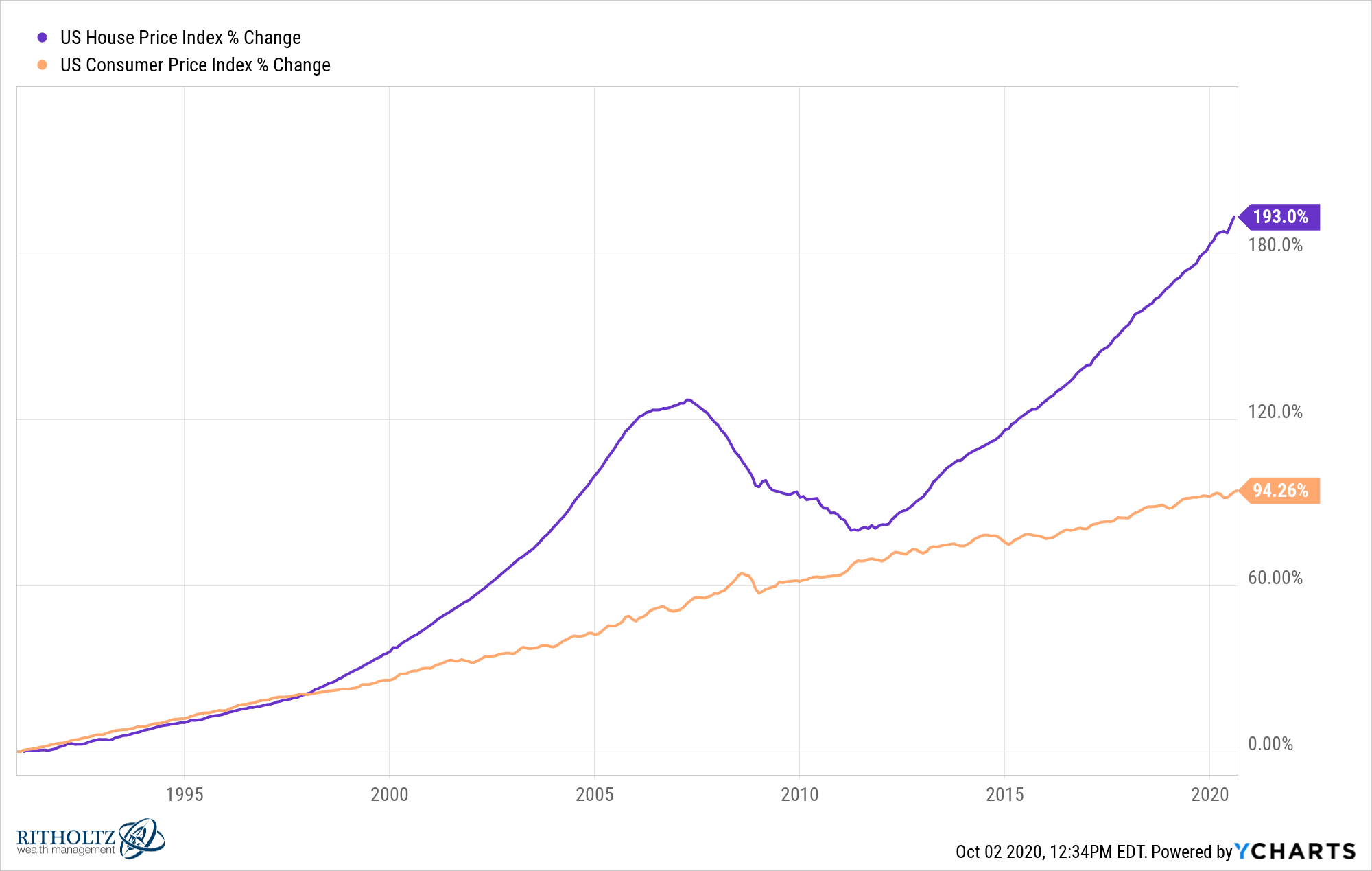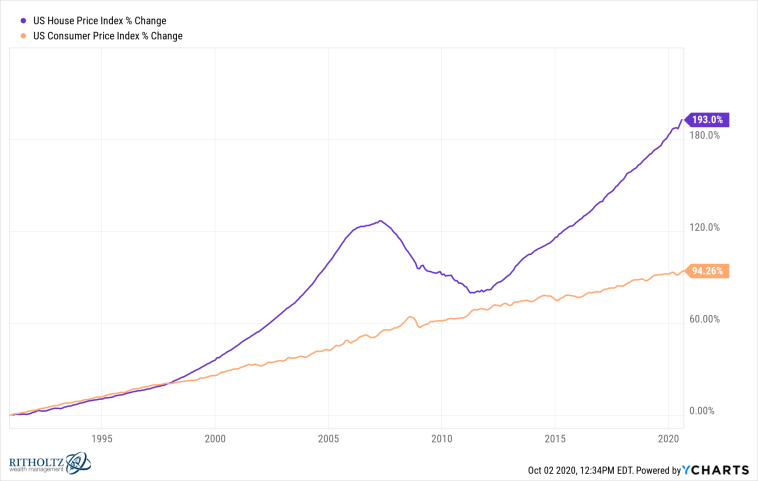
From Digital Overload to Home Improvement Overwhelm: Drawing Parallels in Our Daily Lives
Every day, we encounter messages that hint at the limitations of our systems—from those displayed on computer screens to the warnings we face while tackling home projects. One such message, “Too Many Requests,” might initially seem like a mere technical error. However, a closer look reveals how its meaning can be extended metaphorically to our everyday endeavors, especially within the context of home improvement and home maintenance. Just as our online systems sometimes become overloaded, our daily lives, laden with various tasks and responsibilities, can also feel saturated. This editorial intends to compare the seemingly mundane digital error message to the challenges and twists and turns we face with home projects, security upgrades, DIY renovations, and outdoor yard care.
In the realm of home improvement, projects can often become intimidating and full of problems. Managing multiple tasks at once might initially feel as challenging as deciphering a cryptic error code. It isn’t just the physical labor and materials that cause stress—it’s also managing our time, resources, and the unexpected issues that inevitably pop up along the way. By comparing our digital frustrations to our physical home improvement undertakings, a unique perspective of balance and strategy unfolds, revealing that both areas require systematic approaches to minimize overload.
The focal point of this discussion is the recognition of those moments when too much is happening, whether in our digital space or in the physical space of our homes. When the server messages “Too Many Requests,” it’s a reminder that our environment is overwhelmed, urging us to slow down, prioritize, and manage our resources better. Similarly, when a home improvement project accumulates too many twists and turns, it calls for a reevaluation of priorities, an organized plan, and sometimes, the help of professionals. In this editorial, we’ll explore different strategies to effectively manage home projects and understand how technology can both challenge and support our efforts at home maintenance.
Managing Overwhelming Home Improvement Projects with Smart Planning
At the heart of every successful home improvement project lies careful planning and an appreciation for the small details that can have a major impact on outcomes. Just like digital systems, our homes can experience overload if too much happens at once. The analogy is simple: you wouldn’t try to load a server with endless requests without proper management, and similarly, you shouldn’t overload your home project with too many tasks simultaneously.
DIY Remodeling Projects: Step-by-Step Home Renovation Ideas for Beginners
When tackling a DIY remodeling project at home, it’s easy to get overwhelmed by the number of steps involved. Instead of allowing the project to become intimidating, consider breaking it down into the following manageable steps:
- Project Vision: Sketch your ideas and create a mood board. This helps you get into the mindset needed to steer through the planning phase.
- Budgeting: Clearly outline costs for materials, tools, and labor. Being upfront about expenses is critical in preventing financial surprises later.
- Timeline: Set realistic deadlines for each phase. A timeline prevents the project from ballooning into an overwhelming endeavor.
- Research: Learn about local regulations, necessary permits, and the best practices for techniques and materials. This research may also include online tutorials or advice from experts.
These bullet points serve as a checklist that ensures no subtle parts of the project are forgotten. Just as a technical system must deal with each request methodically, breaking down a home project helps maintain clarity and momentum.
Outdoor Yard Care: Balancing Maintenance and Creativity
Often, homeowners who take pride in their yards are faced with balancing routine maintenance and creative landscaping. When the backyard becomes too busy with competing tasks—trimming, planting, and decorating—it parallels a server bombarded with excessive requests. The issue is not the yard itself but the accumulation of tasks that create a sense of overload.
To keep your outdoor space inviting and manageable, consider these suggestions:
- Divide and Conquer: Assign days for specific tasks such as mowing one day and planting the next to maintain a structured schedule.
- Utilize Smart Tools: Embrace smart gardening tools that can, for example, automate watering schedules or provide timely reminders.
- Creative Design Elements: Spruce up sections of your yard gradually. A phased approach minimizes the overwhelming feel of a complete makeover all at once.
This methodical approach to outdoor care mirrors how managing digital traffic involves prioritization and scheduling, ensuring each request gets its time without causing a system crash. It highlights the need for a balanced method—one that acknowledges every little twist and turn of the project while ensuring that the process remains enjoyable.
Taming the Home Security Maze: Safeguarding Your Space in a Digital Age
The rise of smart home technology has transformed how we view home security. Just like managing digital requests, fetching the correct balance between safety and ease-of-use in home security systems involves multiple considerations. The concept of “too many requests” could symbolize the numerous alerts, updates, and notifications that modern homeowners face, often leading to security fatigue.
Optimizing Home Security Systems for Peace of Mind
Integrating a smart home security system requires a clear understanding of its benefits and challenges. While these systems are essential for keeping your home safe, they also come with their fair share of distracting alerts and complex setups. Here are some suggestions on managing your home security system effectively:
- Streamlined Notifications: Customize your alert settings to ensure that only critical updates reach you. This helps avoid unnecessary distractions when you’re busy with other tasks.
- Regular System Updates: Keep your devices and software up to date. Regular updates prevent vulnerabilities and ensure that your system is running smoothly.
- Professional Support: Consider professional security assessments to tailor the system to your exact needs, ensuring that the installation is both secure and simple to monitor.
By taking these steps, you’re not just adding another layer to your home’s security; you’re finding your way through the tricky parts of integrating technology with daily living. The process demands patience, planning, and an understanding of the hidden complexities in any high-tech system.
Understanding the Balance Between Human Oversight and Automation
While smart home security systems are invaluable, they should always complement rather than replace human oversight. Sometimes, leaning too heavily on automation can lead to a disconnect, where simple tasks become nerve-racking when forgotten to be manually checked. For instance, a subtle but essential detail like verifying a sensor’s functionality should be part of a regular home safety protocol. Here are some tips to consider:
- Set Regular Check-ins: In addition to relying on automated alerts, give yourself time monthly to do a manual overview of your home security system.
- Educate Household Members: Ensure everyone in your home knows how to react in an emergency and understands the basic functions of your security system.
- Backup Plans: Maintain analog alternatives (like traditional locks) as backups in case of technological failure.
This careful strategy of working through the fine points of home security systems helps homeowners avoid overload—both in managing multiple requests digitally and in handling the myriad notifications from modern devices.
Simplifying Home Maintenance: The Role of Routine Inspections and Timely Repairs
Much like a computer encountering a “Too Many Requests” error, your home might send signals that it’s overburdened—creaks in the walls, leaks in the pipes, or malfunctioning appliances. Recognizing these signs early on and addressing them can prevent more significant, nerve-racking problems down the line. Routine home maintenance is not about anticipating failure but about creating a system where small repairs are handled promptly before becoming overwhelming challenges.
Seasonal Home Maintenance Tips for Long-Term Durability
Taking a proactive approach to home care can considerably soften the blows of unexpected problems. Emulating a system update, regular check-ups ensure everything remains in optimum condition. Here are some seasonal maintenance tips you may find useful:
- Spring: Inspect your roof for lingering winter damage, check gutters for blockages, and prepare your garden for planting.
- Summer: Keep an eye on your air conditioning systems, service outdoor grills, and check for pest intrusions as the weather heats up.
- Fall: Seal drafty windows, inspect your heating system, and clean out debris from around the property.
- Winter: Ensure your plumbing is insulated against freezing, monitor your heating elements, and plan for early spring repairs.
These regular changes help in mitigating the accumulation of problems. By segmenting the workload into seasonal tasks, homeowners can manage their maintenance duties without getting overwhelmed. In many ways, this strategy resembles how tech systems manage bandwidth—allocating resources wisely to prevent overload.
Using a Proactive Home Maintenance Checklist
To further simplify your home maintenance routine, consider using a detailed checklist. It might include tasks such as:
| Task | Frequency | Notes |
|---|---|---|
| Roof Inspection | Bi-annually | Look for loose shingles and signs of wear |
| HVAC Servicing | Annually | Replace filters and check ducts |
| Plumbing Check | Quarterly | Inspect for leaks and pipe corrosion |
| Exterior Cleaning | Seasonally | Wash siding and window exteriors |
This checklist not only organizes your responsibilities but also prevents the overwhelming sensation that often accompanies a sudden cascade of repairs. Breaking down extensive maintenance work into smaller, manageable parts is a clear way to steer through the subtle parts of home upkeep with ease.
Modernizing with Minimal Stress: Merging Traditional Techniques with New Technology
As homes continue to evolve with the integration of smart technology, homeowners must often figure a path through a mix of traditional and new methods. While digital solutions provide efficiency, they can also lead to an overload of features—much like a server bombarded with too many requests. The key is finding a balance between embracing modern advancements and sticking with familiar, reliable techniques.
Streamlining Home Automation for an Effortless Experience
The marvel of home automation is that it can simplify rather than complicate everyday tasks. However, less is often more when it comes to tech in the home. Consider these steps to streamline your system without letting it take over your daily routine:
- Prioritize Essential Features: Identify which smart devices truly enhance your life (e.g., smart locks, thermostats, and security cameras) to avoid system clutter.
- Integrate Systems Gradually: Instead of installing everything at once, add devices over time. This approach lets you become comfortable with each new piece of technology.
- Simplify the Control: Use a central hub or a single application to control devices, reducing the confusing bits of juggling multiple apps and interfaces.
This gradual integration is similar to the iterative process of updating software—ensuring that each addition is tested and confirmed to function well before layering on another. It allows you to feel in control, preventing the scattered sensation of managing too many tasks simultaneously.
Blending Old-School Repair Techniques with New Methods
While new technologies offer convenience, traditional repair methods still hold strong value. Many experienced homeowners swear by methods that have been tried and tested over generations. When combined, these approaches form a hybrid strategy that maximizes efficiency without overwhelming the homeowner. Consider the following points when merging these methods:
- Research and Compare: Look into modern tools that assist with traditional repairs, such as digital moisture meters for checking leaks or thermal cameras for insulation issues.
- Hands-on Practice: Engage in the community by attending local workshops or online tutorials that bridge the gap between old-school methods and modern advancements.
- Keep It Simple: Do not feel pressured to adopt every new technology. Stick to the ones that genuinely solve your current problems and enhance your home environment.
This balanced blend of tradition and modernity ensures that you’re not flooded with unnecessary complexity. Instead, you’re likely to enjoy the benefits of both realms while keeping the process manageable and far less intimidating.
Staying Organized in Times of Overload: Time Management for Home Projects
One of the most crucial aspects of successful home improvement is effective time management. Just like a digital system that learns from experiencing too many requests, a homeowner needs to develop coping strategies to avoid feeling overwhelmed. Whether it’s a large-scale renovation or small routine fixes, adopting systematic approaches can save you time and energy.
Scheduling Home Improvement Projects with a Realistic Timeline
Before embarking on any project, setting a clear and achievable timeline is super important. It allows you to pace your work, ensuring you don’t get caught in an exhausting cycle of constant activity. Here are a few ways to create a realistic schedule:
- Break Down Tasks: Divide the project into smaller, manageable segments—such as design, demolition, construction, and finishing touches.
- Allocate Time Wisely: Give each stage its own dedicated timeframe, with built-in buffers for unexpected issues.
- Prioritize High-Impact Areas: Focus on tasks that will bring immediate improvements or prevent further damage, such as fixing leaks or reinforcing structures.
This approach not only helps you make steady progress but also ensures that you’re not trying to tackle multiple tricky parts all at once. In much the same way that digital systems throttle requests to maintain efficiency, organizing your home projects into timed segments prevents burnout and overlapping tasks.
Tools and Apps to Optimize Home Project Scheduling
Embracing technology to manage time might feel a bit ironic after discussing the overload of digital requests, but the right tools can make a world of difference. Consider using the following digital aids to stay organized:
- Calendar Applications: Tools like Google Calendar or Outlook allow you to set reminders and track deadlines.
- Project Management Apps: Applications such as Trello, Asana, or Monday.com enable you to break down tasks, assign deadlines, and even collaborate with contractors or family members.
- Note-Taking Software: Apps like Evernote or OneNote are useful for jotting down ideas, measurements, and supply lists.
By implementing these tools, you’re better equipped to figure a path through the tangled issues of managing multiple home projects simultaneously. This digital organization, when used wisely, results in less stress and a more manageable workload.
Financial Planning for Home Renovations: Budgeting Strategies That Work
The financial aspect of home improvement projects can feel as overwhelming as a flood of digital notifications. With every new endeavor comes a cascade of expenses that need to be managed carefully. Budgeting is a key element that, if not handled well, can turn a promising remodeling plan into a nerve-racking experience.
Creating a Detailed Home Renovation Budget
Every major project should start with a thorough and realistic financial plan. A clear budget provides you with a financial roadmap—helping to prevent unexpected costs and allowing you to stage projects to suit your current financial situation. Here are crucial steps to follow when creating your home renovation budget:
- Itemize Costs: Break down your expenses into categories such as labor, materials, permits, and contingencies. This level of detail is essential to understand where your money is going.
- Research Prices: Investigate current market prices for both materials and professional services in your area. Knowing the going rates will help you avoid being overcharged by surprise.
- Leave Room for the Unexpected: Allocate an extra 10-20% of your budget for unforeseen issues that may arise during the project.
- Consider Phased Investments: If the project is too costly to complete at once, plan it in phases. This allows you to adjust financially while still making steady progress.
Maintaining a detailed checklist and following a budget can be as methodical as debugging a server overwhelmed by too many requests. With a bit of planning, what might seem like a nerve-racking financial maze can transform into a clear, manageable plan.
Using Financial Management Tools for Home Projects
Today, there are many tools available online to help you manage your home renovation projects financially. These can include budgeting apps or simple spreadsheet templates that keep track of all your expenses in one place. Some key features to look for:
- Expense Tracking: Tools that automatically categorize expenses and provide a visual breakdown of where funds are being allocated.
- Forecasting: Apps with forecasting features that help predict future costs based on current spending trends.
- Comparison Tools: Software that allows you to compare estimated costs versus actual spending, highlighting areas for improvement.
Utilizing such tools ensures that your renovation projects progress without your finances becoming as overloaded as a server handling too many requests simultaneously. It’s all about balancing ambition with practicality.
Keeping the Human Touch Amidst Technological Advances
Despite the heavy reliance on technology for both digital and home improvement tasks, nothing beats the wisdom of a personal touch. Home maintenance, security upgrades, and remodeling continue to benefit greatly from hands-on expertise and community advice. Even in smart homes, the human element remains indispensable.
Finding Local Experts for Personalized Home Solutions
In an era when online reviews and automated advice are abundant, personal recommendations and local expertise still hold significant value. Connecting with local tradespeople or home improvement experts can offer personalized guidance that generic online articles simply cannot match. Here are some reasons why local professionals are so important:
- Personalized Advice: They understand the subtle details and unique challenges of maintaining a home in your specific area.
- Quick Response Times: In cases of unexpected issues, local experts can offer prompt help, ensuring minor problems don’t turn into major headaches.
- Community Trust: Recommendations from neighbors or community centers can guide you to reliable professionals who are familiar with local building codes and conditions.
Utilizing local expertise is akin to having a reliable backup when your digital systems become overloaded. In both scenarios, personal interaction can help smooth over the confusing bits and guarantee a more successful outcome.
Maintaining the Balance: Engaging with Home Improvement Communities
One significant advantage today is the abundance of platforms where homeowners can share experiences, ideas, or advice for managing home projects. Engaging in local forums, attending home improvement workshops, or even meeting with a group of like-minded DIY enthusiasts can offer support when the project load seems overwhelming.
Such community interactions remind us that while technology is a powerful tool, the human element remains the cornerstone of success in home improvement tasks. Through collaboration and shared experience, you gain valuable insights to help you find your way through the twisted issues that inevitably crop up during any renovation.
Concluding Reflections: Embracing Balance in a World of Overload
In retrospect, the seemingly trivial “Too Many Requests” error on a computer screen is more than a technical note—it’s a vivid metaphor for the experiences we face in our daily lives, particularly in the context of home improvement. When you are surrounded by an overload of tasks, whether in managing a smart home system or pursuing a full-scale remodeling project, the key is to organize, plan, and proceed thoughtfully.
By breaking down complex tasks into manageable pieces, setting clear priorities, adopting reliable tools, and balancing technology with personal interaction, the overwhelming nature of modern home projects can transform into a structured and satisfying endeavor. Just as a computer system learns to regulate and process multiple requests without collapsing, we too can master the art of home improvement by methodically addressing the clever challenges that arise along the way.
In a world where digital notifications and home projects vie for our attention, maintaining a sense of balance is crucial. Whether you’re working to streamline your outdoor yard care, fine-tuning your home security system, or remodeling your kitchen with a blend of traditional methods and modern technology, remember that every challenging or intimidating step you take builds the foundations for a safer, more enjoyable living environment.
Much like revisiting a persistent server error message, taking time to either pause or reconfigure your approach to home improvement can lead to clearer, more manageable outcomes. The process is iterative. Every tweak, every small repair, and every newly installed smart device adds to the overall strength and harmony of your home.
Ultimately, the journey of home improvement is one of learning, adaptation, and discovery. In embracing the subtle parts of each task and managing your home projects systematically, you pave the way for a balanced lifestyle where your living space functions as a well-maintained, comfortable haven. And just as important, you build resilience against the myriad challenges that both digital and physical worlds throw your way.
Through thoughtful planning, consistent effort, and the necessary humility to ask for help—whether from a local expert or a trusted friend—the once intimidating landscape of home improvement can be navigated with confidence. Every homeowner, armed with the right strategies and a willingness to learn from each twist and turn, can transform their living space into an efficient, secure, and personalized sanctuary.
This editorial isn’t a manual for instant perfection, but rather an invitation to take a closer look at how you manage the pressures of modern life. Embrace the notion that overload—be it digital requests or the demands of home projects—is not a sign of failure but a call to organize, prioritize, and continually learn. With every challenge comes the opportunity to grow and improve, turning overwhelming moments into stepping stones towards creating a home where every detail, no matter how small, is appreciated and cared for.
In closing, consider each project or unexpected alert as a minor detour on the path to achieving your dream home. By learning to manage these tricky parts with a calm approach, you empower yourself to thrive in an environment where both technology and traditional methods coexist harmoniously. So, the next time you encounter an error message—or face a yet-to-be-resolved home repair event—take a breath, sort out your priorities, and remember that balance is the secret ingredient to success.
Let this philosophy guide you as you plan your next home project, secure your digital life, or simply enjoy the satisfaction of a well-kept living space. When we learn to manage our way through the little twists and overwhelming details, we not only improve our homes but also enhance our overall quality of life.
Read more about this topic at
Salesforce Error: REQUEST_LIMIT_EXCEEDED
What does “request limit exceeded” mean?


